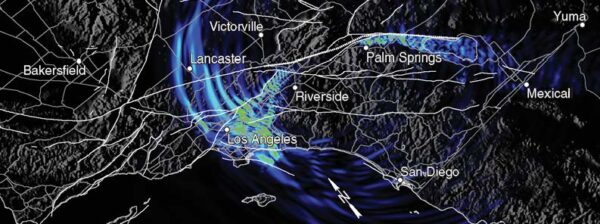
Back in 2008, the USGS launched the ‘ShakeOut’ scenario of a large, magnitude 7.8 earthquake scenario on the southern San Andreas fault. The scenario, which has evolved into an annual earthquake drill with millions of participants worldwide, predicted that Los Angeles would experience unexpectedly large ground motions due to the channeling of waves through an inter-connected series of sedimentary basins. Now, a new study authored by SDSU researchers predicts that the shaking and therefore the damage and fatalities in Los Angeles from such scenario will be significantly less than the early computer simulation estimated. The study, authored by post-doc Te-Yang Yeh and Professor Kim Olsen of the Department of Earth and Environmental Science at SDSU, revisited the ShakeOut scenario on the San Andreas fault using updated models. After including refined subsurface seismic velocities and fault geometry from recent research studies, as well as model features such as mountain topography that were omitted in the earlier study, their simulations found that the expected shaking in Los Angeles from the ShakeOut scenario was significantly reduced. The study offers some potential good news for Los Angeles when the ‘Big One’ occurs in the future.
The study is currently in review in the journal ‘Seismological Research Letters’, and you can read more about the study in this Livescience article:

